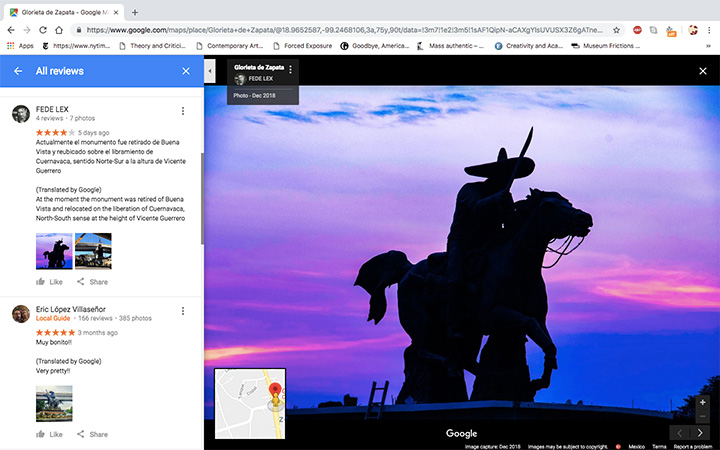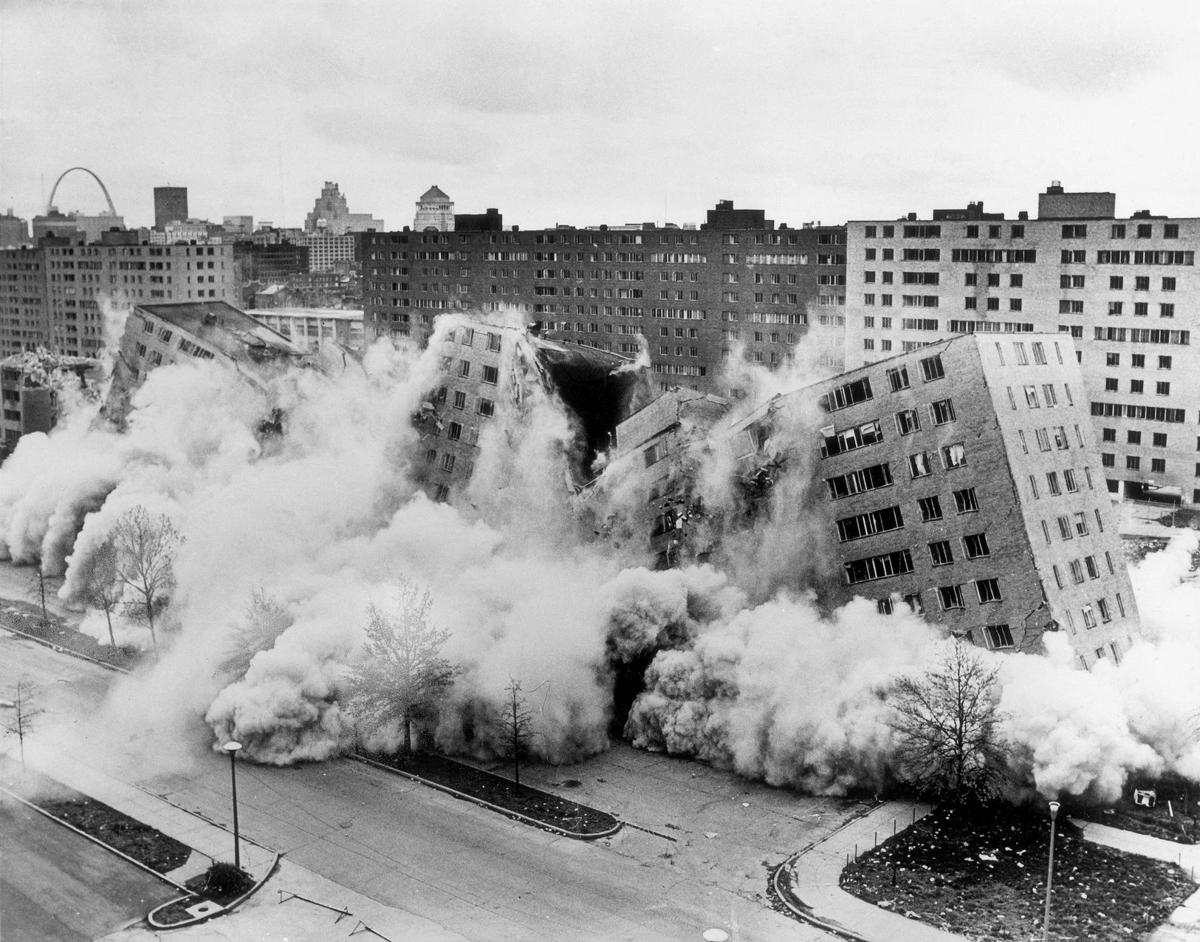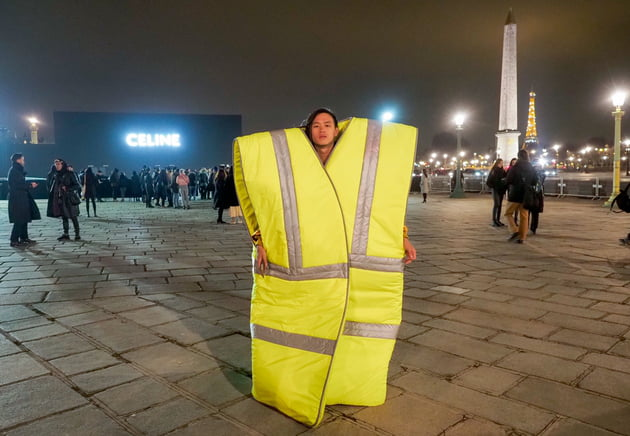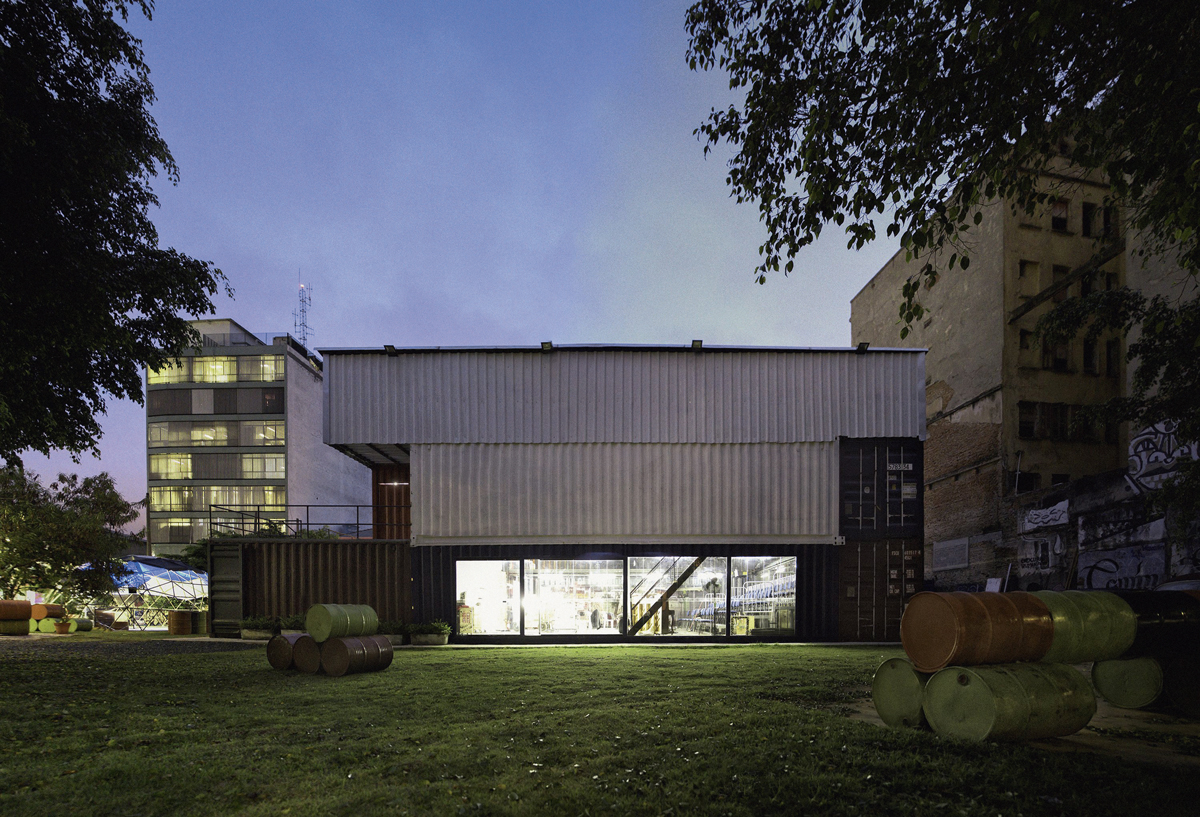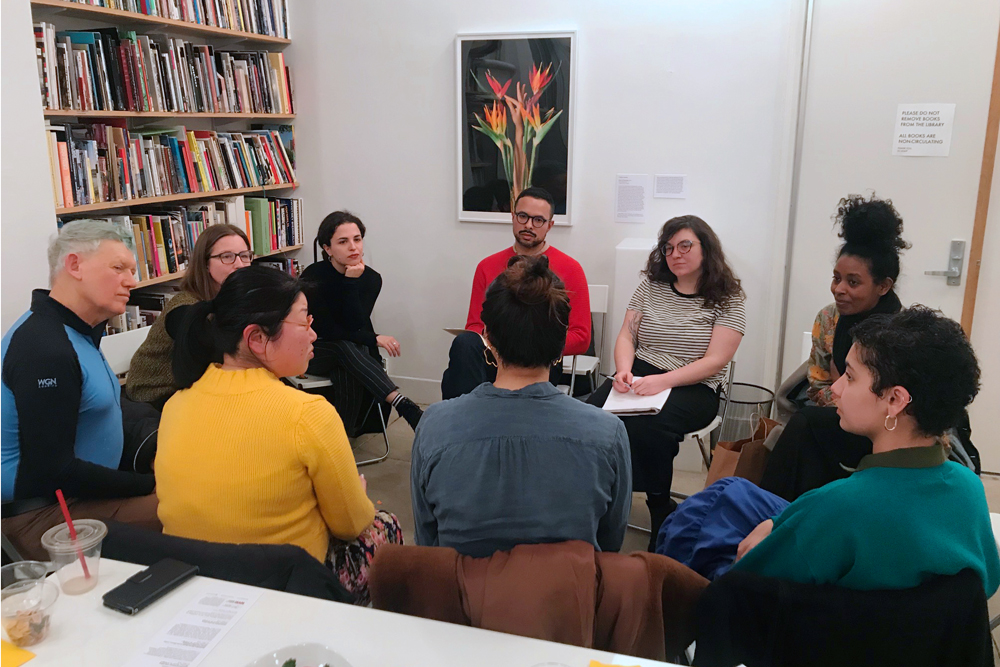Ruination
Fractured Landscapes and the Exportation of Brick in St. Louis
Henry Osman
In some places they mine iron or coal. In St. Louis, they mine brick. Across the city, vacant buildings vanish and in their wake the city itself disappears. Blocks of houses turn into green fields and forests. Emptied lots are marked by single trees or a few stones. What unites these absences is what they once held: structures made of St. Louis brick. Like mountaintop removal or the pitted remains of a quarry, the city is left dotted with these open spaces where plastics, lead, and asbestos sink into the ground. St. Louis may not be the only city whose architecture is being mined and ruin is being exported,1 but no other city has lost as large a share of its population and no other city has brick of this caliber.2 These last two facts are not unrelated. Unlike other shrinking cities, where buildings are left to fall or are demolished by city governments via controversial “right-sizing” programs,3 in St. Louis buildings are also stolen. They are stolen due to the quality of their brick and shipped out to subdivisions, extensions, historical reconstructions, and re-sided garages nationwide. The exportation and resale of the city’s history underscores how memory has become a resource to be extracted. Brick theft, and building demolition more broadly, enact an erasure that remaps the city and re- narrates public memory in its wake, for ruin-making is rarely a passive act.
The evolution of St. Louis brick from mere building blocks to a brand desired nation-wide began in the wake of the 1849 St. Louis Fire.4 On May 17, flames leapt off the steamer White Cloud, setting 22 other ships ablaze on the Mississippi before reaching the waterfront of the city. Four hundred eighteen buildings were burned down, prompting a new building code that mandated brick and iron as the primary materials for construction. New industries and businesses emerged as the city boomed in the 19th century. One such corporation, the Hydraulic Press Brick Company, opened in 1865 and took advantage of high-quality local clay deposits and the newly invented hydraulic press to produce bricks twice as strong as hand-packed ones. In 1874, Henry Ware Eliot, the father of poet T.S. Eliot, became president of the corporation, and by 1900, St. Louis was the largest brick manufacturing center, and the Hydraulic Press Brick Co. the single largest manufacturer in the world.5 While there are no longer any brick presses in St. Louis, the exportation of antique brick underscores the legacy of the industry. In a way, both the rise and fall of the city are charted by the movements of its favored material.
As bricks flow from the city, the landscape fractures. This sentiment is echoed both linguistically and physically in the bricks themselves. Brick, along with the word break, comes from the Middle Dutch bricke, meaning a fragment or a broken piece of tile. The beauty of brick-making is that the process uses heat and pressure to transform fragments of clay and sand into something solid. In effect, brick is earth given a specific form. But the sense of shattering at the heart of the word remains: bricks break apart, foundations crumble, and mortar dissolves as bricks edge back toward soil. Brick on the verge of decomposition, patinated and containing the traces of its history, is especially desired.
My last home in St. Louis was in a six-unit apartment building that was finished with the same red brick as every other building on the block. I lived on the same street as my grandmother, whose house was also made of brick. While my family comes from St. Louis, most of us are now gone and so are many of the buildings we lived in. A few years ago, on my way back from work, I decided to bike past where my grandmother was born. All I found was an empty stretch of grass and a two-story faux-Georgian building with a sign that read “Happy Spirit Adult Daycare Center.” It is impossible to know where exactly her apartment building went or anything about the afterlife of its materials. It could have been stolen or demolished by neglect or the city. Maybe that building now lines a garden path or water feature in some sunbelt exurb, or maybe it’s now an exposed brick wall in a kitchen extension or pre-recession “townhouse loft.” These bricks export time and place, or at least the facade of history, to new developments. Memory becomes a commodity.
In a 2010 interview with St. Louis Public Radio,6 Moore was quoted as saying “there’s no time to waste,” after 22 buildings were stolen in his ward over two months.”7 Moore intended to write a bill addressing the issue, but he wouldn’t be the first to do so. A previous bill from 2007 had been passed to increase fines on illegal demolition and brick reselling.8 It was largely ineffectual— brick theft continued unabated after its passing. In 2011, Moore exclaimed that “Nowhere else in the world can you steal an entire building and get away with it... People are like, ‘They’re fallin’ down.’ No they’re not. They’re being torn down.”9 This is not an issue of spontaneous collapse where an unmaintained building becomes less and less habitable until it falls down over time, allowing people to come by and harvest the loose bricks. Buildings are being torn down— a verb shift that signals the involvement of actors beyond time and erosion, for ruin is rarely a passive act. A vacant structure may be habitable or able to be rehabbed, but a supporting brick wall can be ripped out and carted off overnight. Brick thieves are known to occasionally set fires in order to weaken the mortar of a building, so that when the firefighters hose down the walls the bricks are loosened.
In a 2011 interview with the St. Louis Post-Dispatch, city building inspector Ed Ware described yet another tactic: “In some cases they’ll pull up in a trailer, back off a small tractor and ram into a building to knock down whole walls.”10 Despite earlier attempts at curtailing brick theft, the problem remains. Part of the difficulty in fighting brick theft is the nebulous nature of the act. When buildings are vacant, the question of who exactly is being stolen from is unclear. Is it the city or an absentee owner? It is, to some degree, the community and the public at large that is being stolen from; when the built environment fragments, so does the sense of the city as a shared, mutually produced space. In many cases, illegal brickyards have been successfully shuttered by local activism, such as when the brickyard “Unlimited Bricks” was closed down after complaints by local residents of Old North St. Louis in 2010.11 Now, due to increased city oversight and media awareness, brick theft has gone down from the rate of 22 buildings in two months that Sam Moore noted.
Central to Moore and Ware’s arguments is that brick thieves and the brickyards they sell to act with impunity. Brick theft in St. Louis is only punishable by a $500 fine, and a house might contain an amount of bricks worth thousands of dollars. The solution should not be to only focus on penalizing the brick scavengers, but to instead address the conditions that lead to brick theft. The city government has actively disinvested in large swaths of the city, particularly North St. Louis, the largely African-American half of the city where the majority of brick theft takes place. Much of the city’s residential segregation and subsequent disinvestment in North St. Louis is the legacy of a 1916 ballot measure mandating racially segregated neighborhoods; African- Americans could not live in neighborhoods that were 75 percent white or more and vice- versa.12 Although the act was struck down a year later in the Supreme Court case Buchanan v. Warley, the racist public opinion that created the law in the first place still shapes the city and the spatial dynamics of brick theft. After the law was overturned, the city continued to be segregated via restrictive neighborhood housing covenants until 1948, when another Supreme Court case, Shelley v. Kraemer— this time originating in St. Louis— declared them illegal. It is important to note that brick theft has not been an issue in the whiter and wealthier neighborhoods in St. Louis.13 Bricks are power, and their movement, or rather lack of, reiterates and maps out the social and racial divisions of the city. Their movement forces us to ask whose memory becomes a commodity and a decorative element, and whose doesn’t.
Cities, of course, change as buildings come and go. Keller Easterling highlights this in Subtraction, by arguing that “Building subtraction, as a major industry and design protocol, is a lucrative emergent global enterprise, a source of employment, and a political instrument.”14 While he is correct in positing that subtraction is an integral and long-overlooked part of urban planning and architecture, Easterling never questions the when and where of subtraction. Demolition and reuse are not neutral processes. When examining instances of demolition and reuse in Detroit and St. Louis, Easterling skips over the racial and class bias that informs the decision of which buildings and neighborhoods are targeted. In the case of St. Louis, the majority of the city’s 7,100 vacant buildings are in North St. Louis. Over 4,000 of them need to be demolished for safety reasons, according to the city, with twice as many buildings slated to be demolished in 2019 as in 2018.15 Last year, the city began its first experiment in material reuse, a process in which buildings are slowly deconstructed to preserve the materials used instead of quickly demolishing them. The St. Louis Development Corporation started its first test case in deconstruction at 4208 Martin Luther King Drive, a 19th-century warehouse. By doing this, the city can profit from demolition and market the process as a “green” practice.16 Both brick theft and deconstruction highlight the shift towards economies of rearrangement and reuse, but the focus on the end goal of new construction glides over the politics of the process itself.17
When we look at subtraction as a broader historical phenomenon rather than as an aftereffect of deindustrialization and excess capacity in post-industrial cities, the ways that demolition and reuse signpost shifts in political power is made visible. When I was younger I had an obsession with archaeology, and I would always wonder why only three columns of a temple would remain, or how a city simply became less. Like Sam Moore, I realized that structures were torn down in acts of ruin-making. Marble was burned to make quicklime, which was historically used in the clarification of glass, the deacidification of soil, and the production of mortar and cement. Columns and walls were ripped apart and sutured together. The violence of reuse is visible across centuries; from fifth-century churches’ incorporation of temple columns, to churches built over pyramids, to antique brick fireplaces in McMansions. However, unlike these other instances of reuse, which emerged from colonization and forced religious conversions, the reuse of St. Louis brick is born from a desire for high-quality antiques intersecting with a weakened government unable to prevent the wholesale removal of buildings.
Parallel to the material dissolution of the city is the dissolution of public memory. The ties between architecture and memory and the destruction of physical spaces as a narratological and historiographical tool, run deep. In the Roman Empire, a common mnemonic device was the “memory palace,” whereby the spaces of the home would be used to remember things. Bettina Bergman described this process as “fixing the plan in your imagination: then ordering the ideas, words or images that you wish to remember, placing the first thing in the vestibule (fauces) the second in the atrium, then more around the impluvium,” and so forth.18 If a house could be used to store memories, then according to Roman logic memories could be destroyed by rearranging the house in an act of deliberate ruination. This was termed damnatio memoriae and took many forms; from chiseling names off stone stelae, to buffing faces off coins, to renovating a person’s home to erase both their memory and the memory of them.
There is a litany of acts in St. Louis history that could be termed damnatio memoriae. City-backed “slum-clearance” led to the levelling of Carr Square, an area known for its tenements and high tuberculosis rates.19 In 1942, an early public housing complex was built in the area followed by further home clearances in 1954 for the construction of Pruitt-Igoe, a modernist public housing development that was itself demolished on live television.20 Gaslight Square, an area known for its jazz clubs in the 1950s and 60s, was closed down and its eponymous gaslights were sold to Six Flags. Kinloch,the oldest African- American community in St. Louis, was bought up by the city to build a new runway for the nearby airport. The runway was never built, and the town now has only 300 residents.21 In each of these acts of ruination, long- standing African-American communities were emptied. While brick theft and demolition is not as spectacular as these prior examples of destruction—brick theft on a large scale occurs over the span of years, not in a single televised news segment— the erasure of largely African-American histories and the commodification and exportation of memory is the same.
If the export of St. Louis brick demonstrates how memory can be transformed by the market into a commodity, the ruins that are left take on a different function. Unregulated and stripped of economic value, ruins interrupt contemporary urbanity and visions of progress. Part of this is how they haunt, reminding us that something and someone was here before. These places become temporal dissonances that pierce through the fabric of the city taking various forms: expanses amid new office towers, bricks scattered on the ground, a vacant church. Such spaces make us reencounter the city itself and the violent histories it contains. What remains are markers of whom and what gets picked off piece-by-piece to be relocated and repurposed—left behind in St. Louis only as fragments of what used to be.
-
Like many other cities in the Midwest and across the US, the population of St. Louis has been in decline since the 1950s. This is due to a myriad of factors such as “white flight,” redlining, the de-accreditation of the school system, and deindustrialization. ↩
-
Aaron M. Renn, “St. Louis Blues,” City Journal, June 17, 2019, https://www.city-journal.org/st-louis- better-together-proposal ↩
-
These are programs that aim to demolish houses and concentrate resources in more populated areas of a city. This is done to realign the city’s infrastructure with its current population ↩
-
“Fire Department History,” St. Louis Fire Department, https://www.stlouis-mo.gov/government/departments/public-safety/fire/fire-department-history.cfm#Great_Fire ↩
-
“Brick,” National Building Arts Center, http://web.nationalbuildingarts.org/collections/clay-products/ornamental-brick/ ↩
-
Brick theft peaked in the early 2010s. ↩
-
Mandi Rice, “Brick Theft Steals St. Louis History,” St. Louis Public Radio, December 22, 2010,https://news.stlpublicradio.org/post/brick-theft-steals-st-louis-history#stream/0 ↩
-
St. Louis City Ordinance 67392. https://www.stlouis-mo.gov/government/city-laws/ordinances/ordinance.cfm?ord=67392 ↩
-
Robert Meyerowitz, “St. Louis Brick Thieves,” St. Louis Magazine, June 8, 2011, https://www.stlmag.com/St-Louis-Brick-Thieves/ ↩
-
Matt Blickenstaff, “A plan to Stop the Brick-by-Brick Demolition of the City,” St. Louis Post-Dispatch, November 27, 2011, https://www.stltoday.com/news/local/metro/a-plan-to-stop-the-brick-by-brick-demolition-of/article_3f3265cf-9df9-5120-a62e-650f49b594e4.html ↩
-
Michael Allen, ”Where Stolen Bricks Go,” Preservation Research, December 13, 2010, http://preservationresearch.com/north-st-louis/where-stolen-bricks-go/ ↩
-
Kenneth Jolly, Black Liberation in the Midwest: The Struggle in St. Louis, Missouri, 1964-1970 (New York: Routledge, 2006): 5. ↩
-
Holly Edgell, “St. Louis Continues to Lose Black Residents as White Population Makes a Comeback,” St. Louis Public Radio, June 21, 2018, https://news.stlpublicradio.org/post/st-louis-continues-lose-black-residents-white-population-makes-comeback#stream/0 ↩
-
Keller Easterling, Critical Spatial Practice 4: Subtraction. eds. Nickolaus Hirsch and Markus Miessen (Berlin: Sternberg Press, 2014): 3. ↩
-
Jason Barker and Jess Bogan, “Amid Drumbeat from Falling Bricks, St. Louis to Ramp up Demolition of Vacant Buildings,” St. Louis Post-Dispatch, March 16, 2018, https://www.stltoday.com/news/local/metro/amid-drumbeat-from-falling-bricks-st-louis-to-ramp-up/article_1e237c9c-95e7-5c01-8d0c-92a2fe1a5c78.html ↩
-
Bryce Gray, “Instead of Tearing Down Vacant Buildings, St. Louis Set to Give 'Deconstruction' its First Try,” St. Louis Post-Dispatch, November 19, 2018, https://www.stltoday.com/business/local/instead-of-tearing-down-vacant-buildings-st-louis-set-to/article_87cfa90d-2295-5c50-afbc-04f73c3c72b7.html ↩
-
Easterling, Critical Spatial Practice 4, 52. ↩
-
Bettina Bergmann, “The Roman House as Memory Theater: The House of the Tragic Poet in Pompeii,” _The Art Bulletin_76, no. 2 (1994): 225-256, www.jstor.org/stable/3046021 ↩
-
The crowded living conditions led to high tuberculosis rates, a disease that, in St. Louis, was heavily racialized. The neighborhood was called “the lung block” due to high rates of tuberculosis, as Taylor Desloge discusses in “Creating the Lung Block: Racial Transition and the Making of the ‘New Public Health’ in a St. Louis Neighborhood, 1907-1940,” Missouri Historical Review 111, no. 2 (2017): 124-150. ↩
-
Charles Waldheim, Landscape as Urbanism: A General Theory (Princeton: Princeton University Press, 2016): 120. ↩
-
Ryan Schuessler, “One by One, Missouri’s Black Towns Disappear,“ Al Jazeera America. April 5, 2014. ↩
